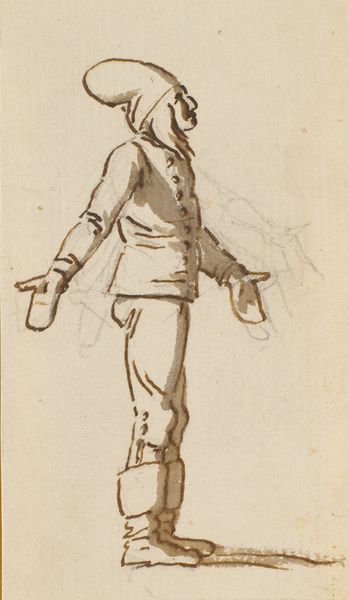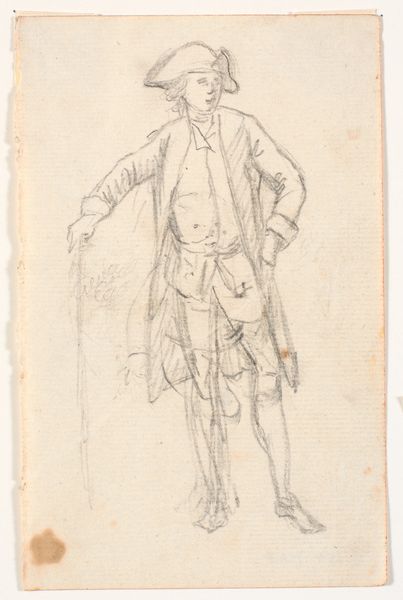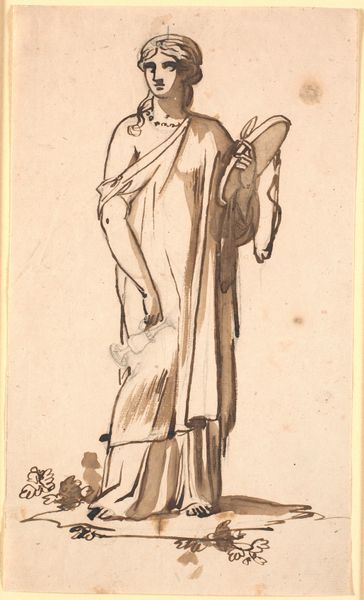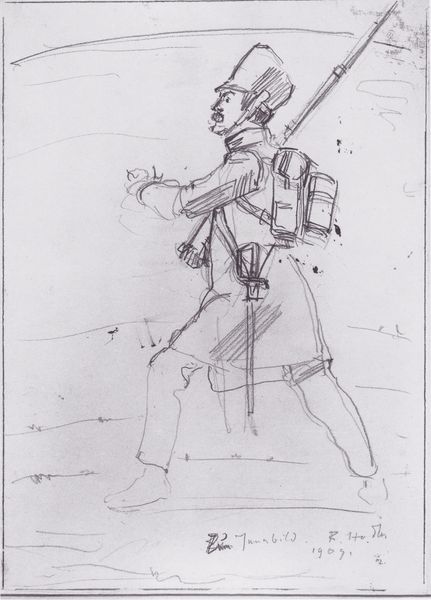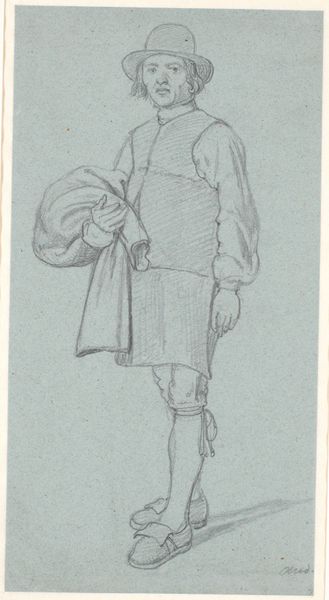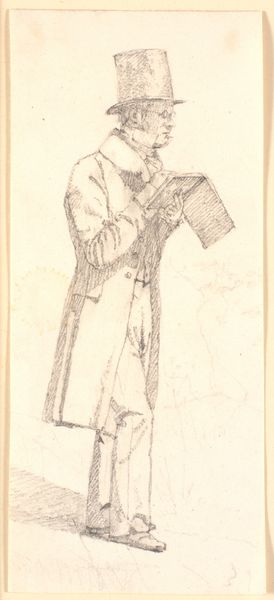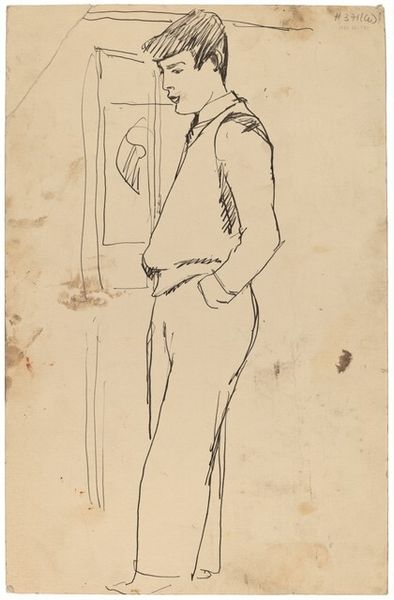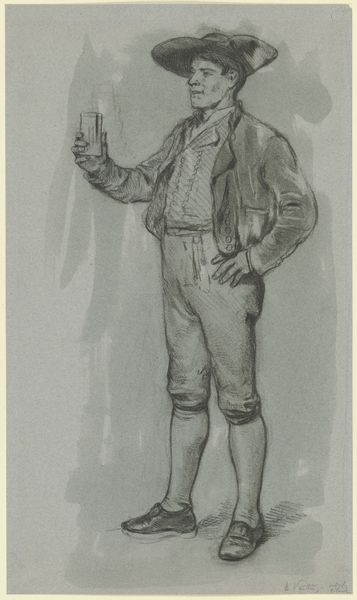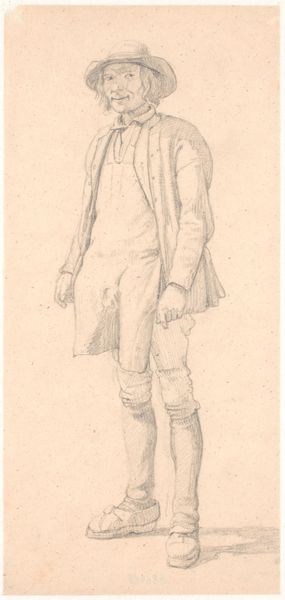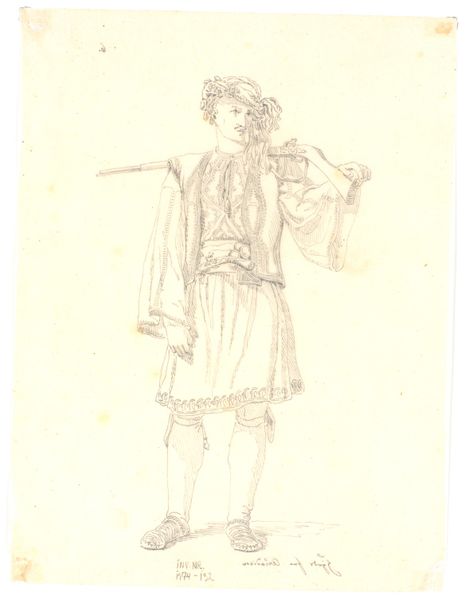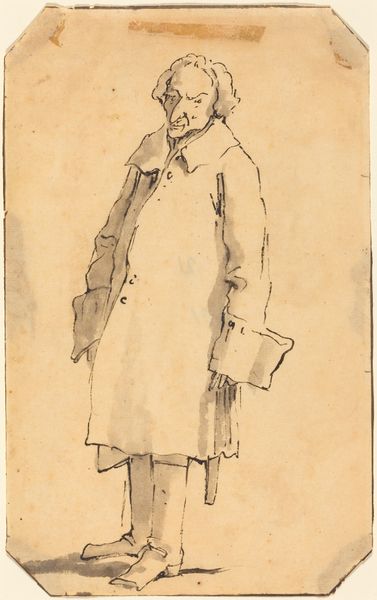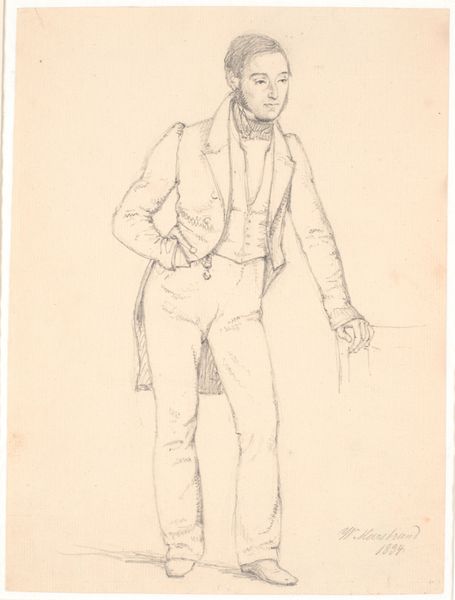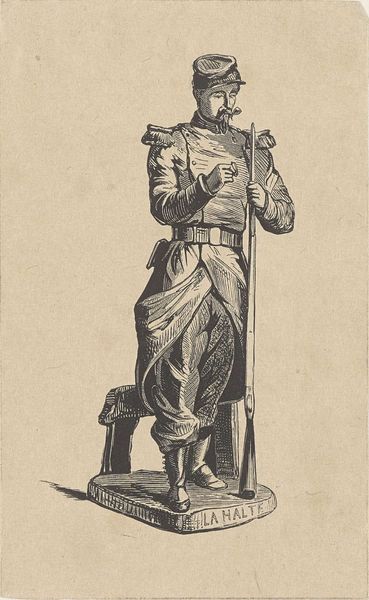
drawing, ink
#
portrait
#
drawing
#
neoclacissism
#
ink
#
genre-painting
#
history-painting
Dimensions: 186 mm (height) x 113 mm (width) (bladmaal)
Curator: Welcome. We’re standing before Nicolai Abildgaard's “Mestertyven Per Mikkelsen,” an ink drawing created around 1800. Editor: Immediately striking is the linearity, the bare essence of form. The subject appears isolated against this stark, empty space, creating a palpable sense of melancholy. Curator: Indeed. Abildgaard, known for his Neoclassical style, reduces the figure to fundamental lines, eschewing excessive detail. Note the subtle variations in line weight – thicker contours define the outline, while finer lines suggest interior folds and creases, thus delineating depth and volume without relying on shading. Editor: But this isn’t simply an exercise in form; it’s laden with cultural baggage. A prisoner! Shackled, and yet the figure stands with a degree of stoicism. What cultural memory does this image evoke for its contemporary audience? Perhaps images of injustice, class disparity, and a harsh legal system? Curator: Undoubtedly. Abildgaard uses the bare minimum to communicate volumes about condition and character. The chain serves less as literal constraint but also as a formal element. Consider how it vertically bisects the figure and interrupts what might otherwise be unbroken planes, creating an internal division mirroring the external limitations faced by the figure. Editor: Precisely. Chains and shackles were not mere instruments of restraint, but potent symbols of state power. This imagery resonates deeply, reminding us of enduring themes of imprisonment—physical, societal, psychological—which span cultures and generations. Curator: And the choice of medium enhances the emotional tone; the immediacy and simplicity of ink amplify the starkness of the scene. The efficiency with which Abildgaard captures the sitter creates a feeling of austere directness, eliminating artifice to spotlight raw emotion. Editor: This lean figuration—captured only with ink—prompts further questions, like does he represent something other than an individual? This is about institutional injustice—something from Denmark's past that, sadly, remains potent. Curator: Looking closely at Abildgaard's formal decisions sheds lights on potent symbolic resonances, creating a viewing experience rich in its complex interplay of style and symbol. Editor: Exactly. So even from the stark image we’ve been considering, complex meanings, social messages, continue to echo.
Comments
No comments
Be the first to comment and join the conversation on the ultimate creative platform.
